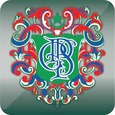Patterns of social interaction in families of children with Expressive Language Delay
DOI:
https://doi.org/10.54393/pbmj.v5i1.207Keywords:
Expressive Language Delay, Scocial interactional patterns, Communication of childrenAbstract
There are two types of languages one is receptive and the other one is expressive. The lack in sufficient social interaction of parents with their children although normal in all developmental milestones causes a delay in their expressive language.Objective: The objective of the present study was to determine the different patterns of soial interaction used by families that are responsible for the development of Expressive Language Delay in children. Methods: Comparitive Cross sectional survey was used for this study. The parents of 100 children from Lahore, of which 50 were parents of normally speaking children and 50 were parents of children with expressive language delay was taken as sample. These parents were asked to fill the questionairre accordingly that consists of different statements regarding their social patterns used by them to interact with their children. Results: Results indicated that there were significant differences with a p-value of 0.01 between the patterns used by parents of normally speaking children than those of expressive language delayed children. The mean values of excessive screen time of children with expressive language delay and normally speaking were 1.9600 and 4.0200 with standard deviations of 1.22824 and 0.84491 respectively. There were also insignificant differences with the p-value <0.01 in habits including reading picture books, using simple sentences and abrupt response to new things happen of parents with normally speaking children than with the parents of expressive language delayed children. Conclusion: It is concluded that there is a difference between interactional patterns of parents of children with expressive language delay than those with normally speaking children that are the main causes of developemnt of expressive language delay in these children.
References
Association AS-L-H. Scope of practice in speech-language pathology. 2016.
Physicians AAoF. Familydoctor. org. 2009.
Burden V, Stott C, Forge J, Goodyer L. The Cambridge Language and Speech Project (CLASP). L Detection of language difficulties at 36 to 39 months. Developmental Medicine & Child Neurology. 1996;38(7):613-31.
https://doi.org/10.1111/j.1469-8749.1996.tb12126.x
Coplan J. Evaluation of the child with delayed speech or language. Pediatric annals. 1985;14(3):203-8.
https://doi.org/10.3928/0090-4481-19850301-05
Vigil DC, Hodges J, Klee T. Quantity and quality of parental language input to late-talking toddlers during play. Child Language Teaching and Therapy. 2005;21(2):107-22.
https://doi.org/10.1191/0265659005ct284oa
Safwat RF, Sheikhany AR. Effect of parent interaction on language development in children. The Egyptian Journal of Otolaryngology. 2014;30(3):255.
https://doi.org/10.4103/1012-5574.138488
McLaughlin MR. Speech and language delay in children. American family physician. 2011;83(10).
Hawa VV, Spanoudis G. Toddlers with delayed expressive language: An overview of the characteristics, risk factors and language outcomes. Research in developmental disabilities. 2014;35(2):400-7.
https://doi.org/10.1016/j.ridd.2013.10.027
Law J, Boyle J, Harris F, Harkness A, Nye C. Prevalence and natural history of primary speech and language delay: Findings from a systematic review of the literature. International Journal of Language and Communication Disorders. 2000;35:165-88.
https://doi.org/10.1080/136828200247133
Rahim A, Fauziah SN, Rahman NS. Children Interaction Patterns Exhibited During Learning Activities: A Case Study at a Selected Public Kindergarten in Malaysia. ICSSR E-Journal of Social Science Research. 2013:184.
Pancsofar N, Vernon-Feagans L. Mother and father language input to young children: Contributions to later language development. Journal of Applied Developmental Psychology. 2006;27(6):571-87.
https://doi.org/10.1016/j.appdev.2006.08.003
Roberts J, Jergens J, Burchinal M. The role of home literacy practices in preschool children's language and emergent literacy skills. Journal of Speech, Language, and Hearing Research. 2005;48(2):345-59.
https://doi.org/10.1044/1092-4388(2005/024)
Dalton DS, Cruickshanks KJ, Klein BEK, Klein R, Wiley TL, Nondahl DM. The Impact of Hearing Loss on Quality of Life in Older Adults. The Gerontologist. 2003;43(5):661-8.
https://doi.org/10.1093/geront/43.5.661
Pennington L, Goldbart J, Marshall J. Speech and language therapy to improve the communication skills of children with cerebral palsy. Cochrane Database of Systematic Reviews. 2004(2).
https://doi.org/10.1002/14651858.CD003466.pub2
Blake ML. The Right Hemisphere and Disorders of Cognition and Communication: Theory and Clinical Practice: Plural Publishing; 2017.
https://doi.org/10.1007/978-3-319-47489-2_10
Poll GH, Miller CA. Late talking, typical talking, and weak language skills at middle childhood. Learning and Individual Differences. 2013;26:177-84.
https://doi.org/10.1016/j.lindif.2013.01.008
Force UPST. Screening for speech and language delay in preschool children: recommendation statement. Pediatrics. 2006;117(2):497-501.
https://doi.org/10.1542/peds.2005-2766
Girolametto L, Weitzman E, Wiigs M, Pearce PS. The relationship between maternal language measures and language development in toddlers with expressive vocabulary delays. American Journal of Speech-Language Pathology. 1999;8(4):364-74.
https://doi.org/10.1044/1058-0360.0804.364
Buschmann A, Jooss B, Rupp A, Feldhusen F, Pietz J, Philippi H. Parent based language intervention for 2-year-old children with specific expressive language delay: a randomised controlled trial. Archives of disease in childhood. 2009;94(2):110-6.
https://doi.org/10.1136/adc.2008.141572
Catts HW, Fey ME, Tomblin JB, Zhang X. A longitudinal investigation of reading outcomes in children with language impairments. Journal of speech, Language, and hearing Research. 2002.
Downloads
Published
How to Cite
Issue
Section
License
Copyright (c) 2021 Pakistan BioMedical Journal

This work is licensed under a Creative Commons Attribution 4.0 International License.
This is an open-access journal and all the published articles / items are distributed under the terms of the Creative Commons Attribution License, which permits unrestricted use, distribution, and reproduction in any medium, provided the original author and source are credited. For comments editor@pakistanbmj.com











